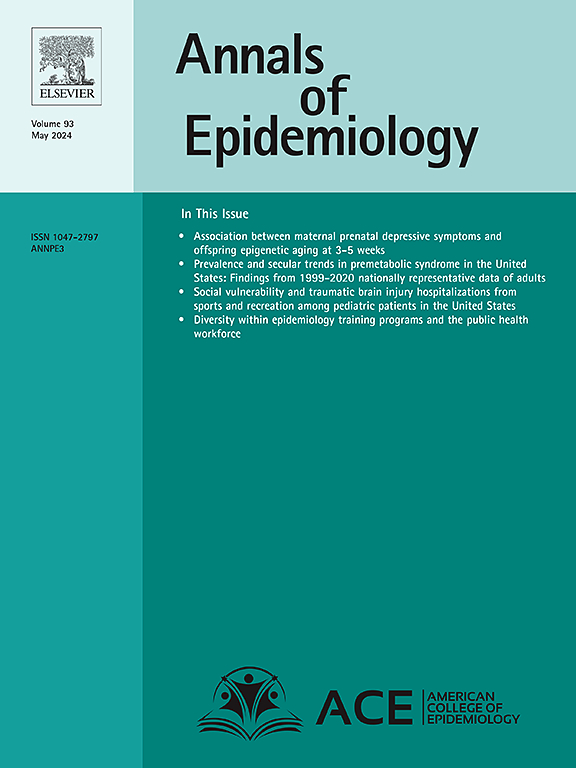Calculation of lifetime relative risks from summary cohort data and application to calculation of attributable fractions
IF 3.3
3区 医学
Q1 PUBLIC, ENVIRONMENTAL & OCCUPATIONAL HEALTH
引用次数: 0
Abstract
In cohort studies, relative risks are estimated by comparing eventual disease risk in individuals exposed to the risk factor at baseline with similar unexposed individuals. However, such relative risk estimates intrinsically depend on how many of the unexposed individuals develop exposure after baseline and on the ages at which the exposed individuals developed exposure prior to baseline. These factors pertain to the distribution of risk factor incidence in the population, rather than to the causal effect the risk factor has on disease. As such, these cohort relative risk estimates have no straightforward causal interpretation, even after adjustment for confounding. Here, we instead consider initial exposure to the risk factor at differing ages as differing treatments, with corresponding potential outcomes. Subsequently, we define lifetime relative risk as the relative probability of eventual disease comparing initial exposure to the risk factor at differing ages to lifetime non-exposure. We describe a procedure to approximate lifetime relative risks using summary data from published cohort studies, and detail conditions under which such estimation is valid. In addition to being of independent interest, lifetime relative risks are useful in estimating population attributable fractions (PAF)s. In our applied example, we illustrate this connection via application of estimated lifetime relative risks to assess the PAF for incident vascular dementia due to hypertension in the United Kingdom.
从汇总队列数据计算终生相对危险度并应用于归因分数的计算。
在队列研究中,通过比较基线时暴露于危险因素的个体与相似的未暴露个体的最终疾病风险来估计相对风险。然而,这种相对风险估计本质上取决于有多少未暴露个体在基线之后发生暴露,以及暴露个体在基线之前发生暴露的年龄。这些因素与危险因素在人口中的发病率分布有关,而与危险因素对疾病的因果关系无关。因此,这些队列相对风险估计没有直接的因果解释,即使在对混杂因素进行调整后也是如此。在这里,我们转而考虑在不同年龄初始暴露于危险因素作为不同的治疗方法,具有相应的潜在结果。随后,我们将终生相对危险度定义为在不同年龄初始暴露于危险因素与终生未暴露于危险因素之间最终患病的相对概率。我们描述了一种使用已发表的队列研究的汇总数据来近似终生相对风险的方法,并详细描述了这种估计有效的条件。除了具有独立意义外,终生相对风险在估计人口归因分数(PAF)时也很有用。在我们的应用示例中,我们通过应用估计终生相对风险来评估英国高血压引起的血管性痴呆事件的PAF来说明这种联系。
本文章由计算机程序翻译,如有差异,请以英文原文为准。
求助全文
约1分钟内获得全文
求助全文
来源期刊

Annals of Epidemiology
医学-公共卫生、环境卫生与职业卫生
CiteScore
7.40
自引率
1.80%
发文量
207
审稿时长
59 days
期刊介绍:
The journal emphasizes the application of epidemiologic methods to issues that affect the distribution and determinants of human illness in diverse contexts. Its primary focus is on chronic and acute conditions of diverse etiologies and of major importance to clinical medicine, public health, and health care delivery.
 求助内容:
求助内容: 应助结果提醒方式:
应助结果提醒方式:


